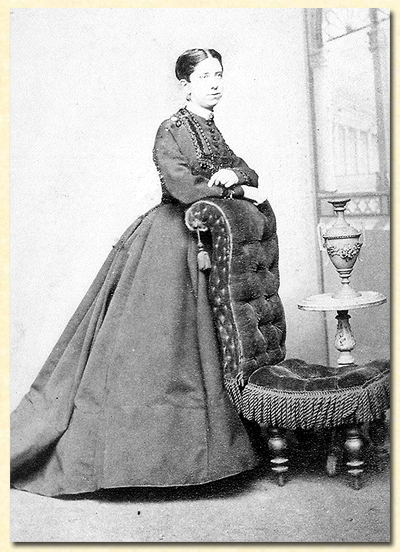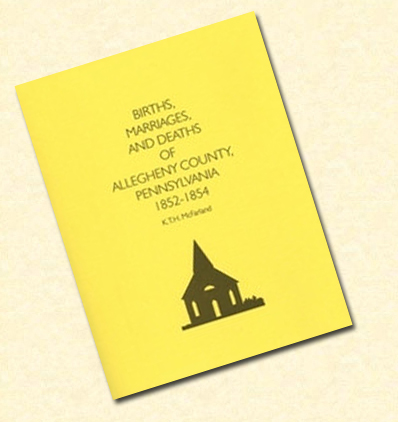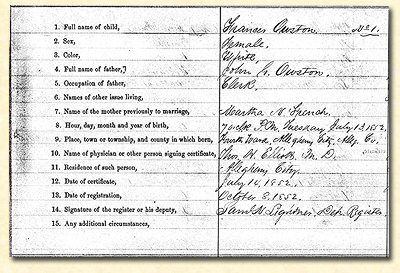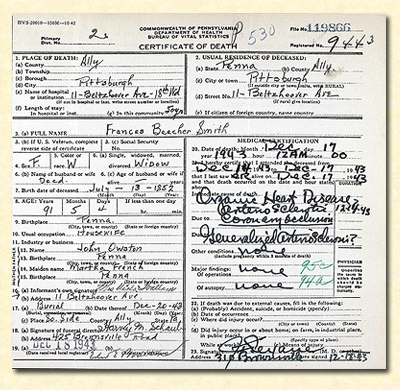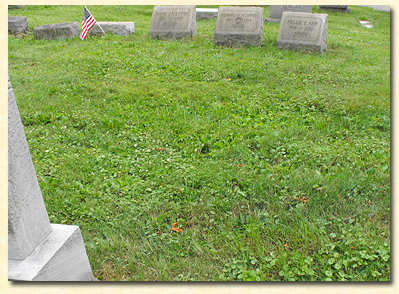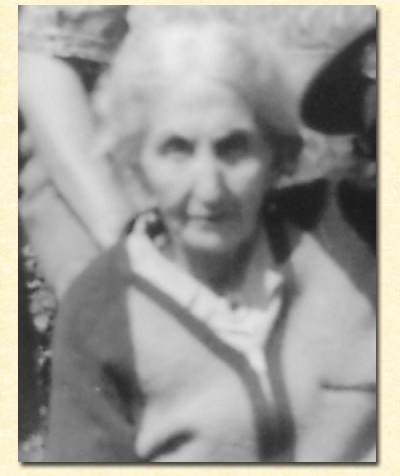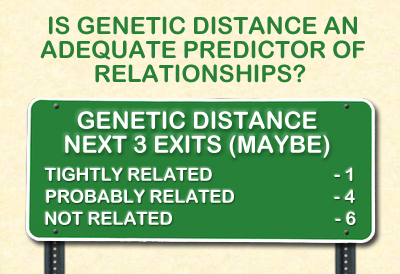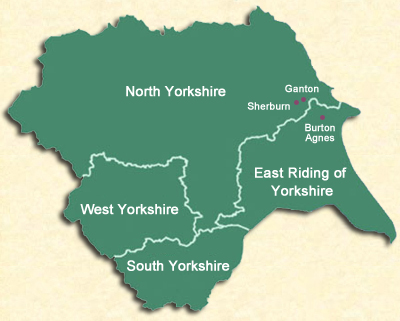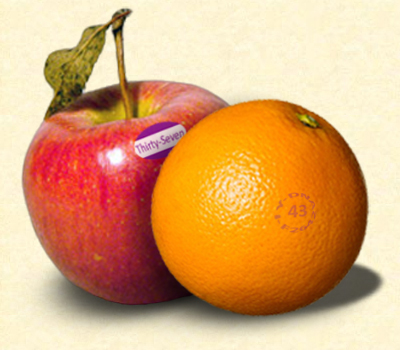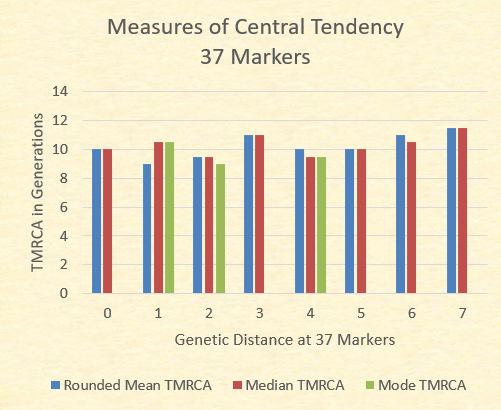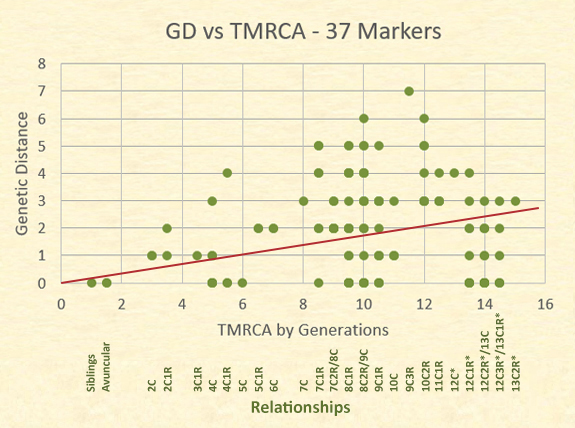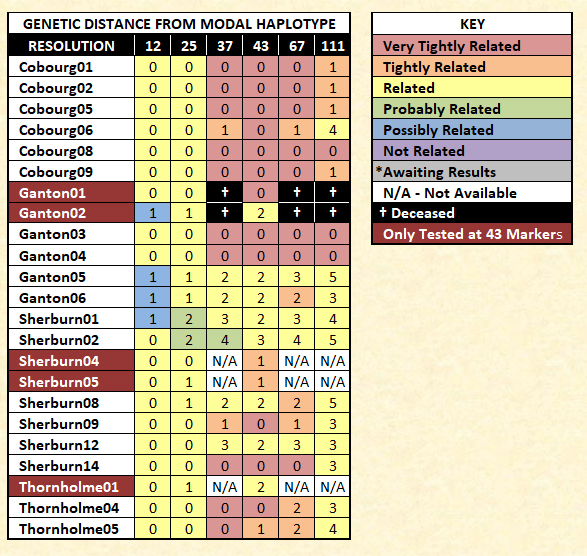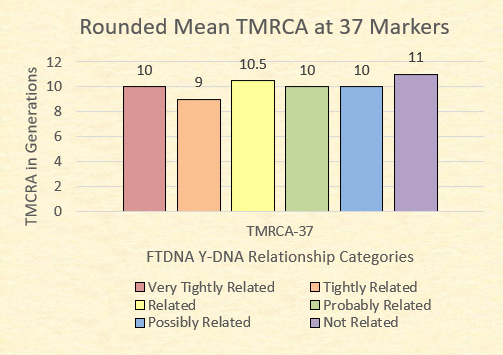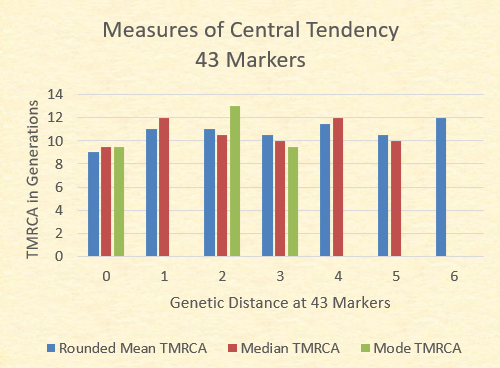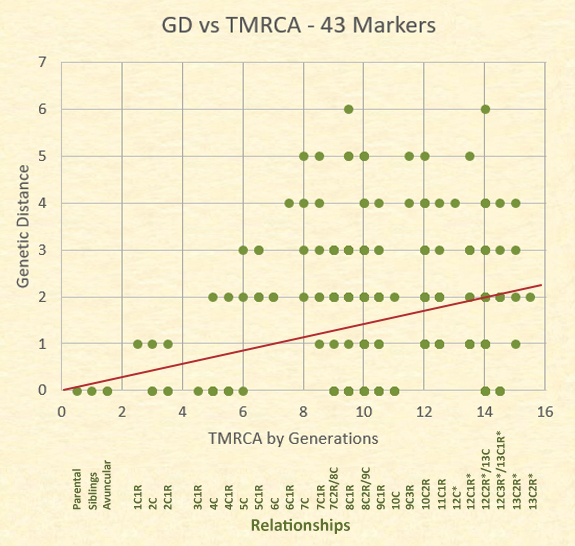Ask any genealogist to list his or her frustrations and inevitably the term “brick wall” will surface in the discussions. Brick walls are points when all clues regarding an individual are seemingly non-existent. In most cases, these brick walls occur as we go backwards in our lineage and we reach a point where an ancestor’s identity is unknown.
For Americans, this can happen within a few generations as
record keeping was sparse, spotty, or non-existent in some locales during the 19th
century. Municipalities, counties, and
states had varying degrees of public record keeping. In other words, there is
no official US standard and American genealogy can be difficult at best.
When we begin our genealogical quest, our mission of
discovering each ancestor is actually a series of brick walls that will be
either knocked down with extensive research or will remain solid. Sometimes this happens with one piece of
direct evidence, or it only occurs with constant chiseling with indirect
documentary or DNA evidence (see example).
Not only will we encounter brick walls while seeking our direct ancestors,
but we will also run headlong into the same barriers when we trace the descendents
of those ancestors as well – our collateral lines.
One of My Walls
For 37 years, I’ve been searching for my great-grandfather’s
sister with very little luck. Over time, I've been able to ascertain that Frances Jenett Owston was born
in Allegheny City (now Pittsburgh’s North Side), Pennsylvania in 1852, but I never could find her as an adult. I first became aware of her existence in early 1978 when
my great-grandparents’ family bible surfaced after being out of the bloodline
for nearly 50 years. Between the pages
of this large presentation bible was a piece of heavy paper stock with 11
locks of hair; each one was identified and dated.
Some individuals had two samples from different periods of
their lives including my great-grandfather who had one dated from 1858 when he
was four years old and one from twenty-two years later. While most of the names were easily
identifiable as being members of my great-grandparents’ household, two were
not. One was a Grandma Ritchey, 70 years of age – who
was eventually determined to be my third great grandmother. The other was for Fannie Owston; her sample
was dated 1859.
For 27 years, I had assumed that this was my
great-grandfather’s first cousin, Frances W. Owston, who also lived in
Pittsburgh. Since my great-grandfather’s
family was musical and this Fannie Owston was a music teacher, it seemed
plausible. Confirming the identification
was problematic, as I couldn’t initially find my second great-grandparents in
the 1860 census. Despite repeated searching of the census records,
I was unable to find their listing until 2006. The problem was that the family was
listed under an incorrect but similar surname and the head of the house’s (my second great-grandfather) initials were
transposed. See my post on this.
Although finding the census in 2006 provided additional evidence of her existence
as my great-grandfather’s sister, I was able to determine the identity of Fannie Owston four years earlier. While browsing through the genealogical books in the Carnegie
Public Library in Pittsburgh, I found Ken McFarland’s book Births,
Marriages, and Deaths of Allegheny County, Pennsylvania 1852-1854. McFarland’s a diligent researcher who has transcribed
and indexed numerous records from the Greater Pittsburgh area.
While in 1980 I had previously looked at the microfilm of
Allegheny County’s records from this period, I found no one in our family listed
and never revisited these documents.
This time, however, I was interested in McFarland’s book, not for my own
family, but for siblings of 1200 Pennsylvania Civil War soldiers that I am
tracing from womb to the tomb. I was
hoping to find maiden names of the mothers of some of these soldiers.
As I opened the book, there it was on page one – and
it was even registration number one: the birth record of Frances Owston daughter of John G. Owston
and Martha N. French. She was born at 7
PM on July 13, 1852 in the fourth ward of Allegheny City, PA. Since this time, I’ve searched diligently for
Frances Owston, but outside of the additional listing in the 1860 census, I’ve
had no luck.
The family had moved from Pittsburgh to Canada in about 1857
and was in Detroit in 1860 where my second great-grandmother died that same
year. In 1995, I had traveled to Detroit
to research my second great grandparents.
While I found some information on the family, nothing on Frances
surfaced. No one else was buried in the
plot where my second great grandmother was buried, so it seemed plausible that Fannie survived the family’s eight year stay in Michigan.
By 2009, I became aware of my family’s 1863 move from
Detroit to East Saginaw along with my second great-grandfather’s marriage to
and subsequent divorce from Permelia Condon.
This heretofore unknown tidbit was a serendipitous discovery through searching
my surname in Google Books. A published biography
and photo of my second great-grandfather with information about his work in Saginaw
led to the discovery of his second wife.
After the couple separated, the family moved back to Allegheny City in
1868.
Unfortunately, Detroit, East Saginaw, and Wayne and Saginaw
counties were not registering vital information during the 1860s and
1870s. If Fannie had moved back to
Allegheny County with her father and brother, chances of finding her if she
married or died were marginal. Allegheny
County did not begin registrations of marriages until September 1885 and
Allegheny City did not register births or deaths until July 1882. I had already
checked all of these records in the past for anyone with my surname. If death or marriage occurred before the
1880s, I might never find her. But, I
never stopped searching.
Background on the Records
While Pennsylvania is currently ranked at sixth in
population, it was the second most populous state for much of its history. You would think that a vital “keystone” of a
state might have policies in place to register births, marriages, and deaths –
but alas, it did not for many years. In
the mid 19th century, Pennsylvania attempted to institute registrations
of births, marriages, and deaths. This
1852 registration was unsuccessful, and the state dropped the experiment after two
years.
One problem was that registration was not compulsory and many
individuals failed to comply. Frances
Owston was the first to be registered in Pennsylvania’s second largest county
and third largest city, but her birth occurred seven months after the law was
effected and was not registered by the physician until three months later. Her brother’s birth two years later in the same town was never registered with
the state.
Eventually, individual municipalities began to register
births and deaths over the next 50 years. Pittsburgh, the second largest city in the Commonwealth, began in 1870. As previously
stated, Pittsburgh’s neighbor to the north, Allegheny City, waited 12 more
years to register birth and death records.
Other towns followed suit but only when it was convenient to do so.
Additionally, none of these registrations through 1905 were
mandatory. A case in point is my
father’s siblings. All five were born before 1906 and two died in early childhood
during the same period; none of these events were registered even though the municipalities were actively registering births and deaths.
The practice with marriages and divorces in Pennsylvania was
different. As of September 30, 1885,
Pennsylvania required that all counties register marriages and these be on file
in the local county courthouse. Marriage
registration was mandatory and the same process exists today. Divorce records were registered with the
county’s Prothonotary beginning in 1804.
Statewide mandatory vital registration, however, did not begin until
1906, which is late considering the population of Pennsylvania and that it prides
itself on being the second state to ratify the Constitution.
Fast forward
After November 2014’s election, Governor Tom Corbett may not
think he has a friend in Pennsylvania, but he certainly has a friend in me, as
he signed Act 110 (Pennsylvania Vital Records Bill SB-361) into law on December
15, 2011. I was one of the many people to sign several petitions over the last
10 years to hasten the Commonwealth to begin this process. The bill went into effect on February 13, 2012
and the Division of Vital Records transferred all death certificates 50 years
old and older and birth certificates 105 years old and older to the
Pennsylvania State Archives in Harrisburg.
Declaring these documents as old records made them easily available to the public and the old paper indexes for both became listed on the Pennsylvania Department of Health’s website. The indices, however, are PDF scans of the typewritten copies and are laborious to use – but, at least, they are there. Copies of the original records are now available to anyone through the State Archives for $5.00. This is providing you have the registration number from the indices. From my personal experience, the turnaround of the processing takes less than a week.
Declaring these documents as old records made them easily available to the public and the old paper indexes for both became listed on the Pennsylvania Department of Health’s website. The indices, however, are PDF scans of the typewritten copies and are laborious to use – but, at least, they are there. Copies of the original records are now available to anyone through the State Archives for $5.00. This is providing you have the registration number from the indices. From my personal experience, the turnaround of the processing takes less than a week.
How important is this move?
Being a native Pennsylvanian and an avid researcher of Pennsylvania
records, this was a dream come true. In
the past, Vital Records’ processing was slow (up to a month); they could reject
you if you were not a blood descendent or legal representative of the person on
the birth certificate (a caveat on their forms); you were not allowed to copy,
photograph, or publish an image of the record; and the service was expensive to
use, especially if you simultaneously wanted numerous certificates. Prior to
the transfer, a death record would cost $10, unless you didn’t know the date
and then an additional search fee was of $10 was charged for a search of ten
years.
While looking for my great-grandfather’s first cousin’s
death record, I got stung for $50. Not knowing the date of his passing, I
ordered a copy of the certificate with a 10 year window (1920-1929) search –
that was $20. No document was found. I
ordered another search at $20 for the years of 1910-1919. This was also
inconclusive. Several years later while
perusing a church’s records on site, I found his 1923 burial date – the
cemetery provided an exact date of death.
I ordered the certificate again ($10) with the exact date and received
it. Unfortunately, Vital Records did a
sloppy job on the first search and I was out $30.
Further Movement
In August 2012, the Pennsylvania State Archives and Ancestry
signed an agreement for the company to digitize and upload the records. These would be freely available to Pennsylvania
residents if they register at http://www.portal.state.pa.us/. All Ancestry customers would also have access
as part of their individual memberships.
On April 18, 2014, Ancestry announced that it had uploaded
the images and database information on death records from 1906-1924. As with many individuals, I began searching
for family and others. As with the
database and the certificates, there were some issues that I will address in
future posts. The second group,
1925-1944, went live on June 24, 2014.
The records through 1963 completed the death certificate process on
October 24, 2014.
Birth certificates for 1906 will be completed in March
2015. No timeline has been communicated
regarding the records for 1907-1909.
Until the end of this year, only the indices for 1906-1908 are currently
available.
Brick Wall Smashed
In July 2014, I decided to see if Ancestry had completed any
further uploading of death certificates.
They had, and I did my customary search of my surname. To my surprise, I found a Frances Beecher
Smith who was the daughter of John Owston and Martha French. This was my great-grandfather’s missing
sister.
After doing additional research in Pittsburgh, I began to
piece together her story: two failed
marriages, a bitter rivalry with another woman, the birth of two children, the loss of a
grandchild, and the finding of another.
While she never owned her own home, what she did have was far more
precious than gold. She lived a long
life and had the support of a family that dearly loved her and to whom she
reciprocated that love.
My biggest surprise about Fannie was that she lived less
than 15 miles from my childhood home. Outside
of the records I previously mentioned, I had never encountered her in any other until
now. In fact, I had walked across her
grave (which is unmarked) on at least four occasions looking for others in the
same cemetery. No stone is present, and
even if there was one, I wouldn’t have recognized the name Frances Smith.
In addition, I have found Fannie’s only surviving
great-grandchild who lived in the same home with her for two decades. We have corresponded and talked on the phone
concerning the differences and similarities in our respective families. In addition, this third cousin turns out to
be a double third cousin as I am related to both her maternal
grandparents. We still have a lot of
catching up to do yet.
Thanks to the 48 members of the Pennsylvania Senate and 194 members of Pennsylvania House of Representatives who voted to pass this act, to Governor Tom Corbett who signed the bill into law, and to the forward thinking folks at the Pennsylvania State Archives and Ancestry for collaborating on this important project.
I have already viewed several hundreds of these certificates
and in our next installment I will deal with death records, primarily those from
Pennsylvania, and their importance as genealogical evidence and the inherent
problems regarding these records as sources of information.
References
Ancestry.com. (2014). Pennsylvania, Births, 1852-1854. Database available
at http://www.ancestry.com
Ancestry.com. (2014). Pennsylvania, Death
Certificates, 1906-1963. Database available at
http://www.ancestry.com
Gruber, T. (2014). People for Better Pennsylvania Historical Records Access (PaHR-Access):
Frequently Asked Questions. http://users.rcn.com/pahraccess/PaHR-Access-FAQ.htm
Gruber, T. (2014). People for Better Pennsylvania Historical Records Access (PaHR-Access):
Genealogists, Researchers, Family Historians. http://users.rcn.com/pahraccess/PaHR-Access.htm
McFarland, K.T.H. (1999). Births, Marriages, and
Deaths of Allegheny County, Pennsylvania 1852-1854. Apollo, PA:
Closson Press.
Pennsylvania Department of Health. (2014). Act 110
– Public Records (formerly known as Senate Bill 361). http://www.portal.state.pa.us/portal/server.pt/community/public_records/20686
Pennsylvania General Assembly. (2012). Senate Bill
361; Session 2011-2012. http://www.legis.state.pa.us/cfdocs/billinfo/bill_history.cfm?syear=2011&sind=0&body=S&type=B&bn=361
Pennsylvania Historical & Museum Commission. (2014). Vital Statistics Records at the Pennsylvania State Archives. http://www.portal.state.pa.us/portal/server.pt/community/genealogy/3183/vital_statistics/387291




